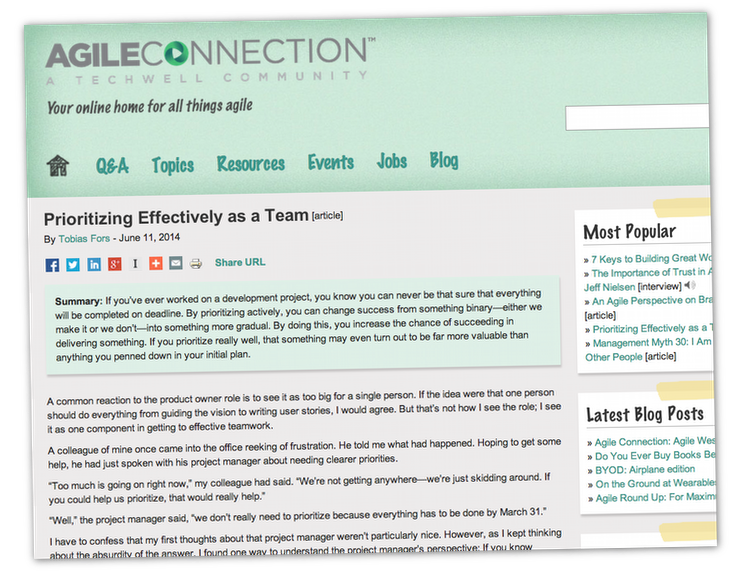Not too long ago I was teaching a class at a client company. During the morning of the second day of the class, I had reserved a block of time for diving into some of their specific challenges. I usually do this, because while I have an agenda I’m supposed to cover, I know that one of the most important parts of learning new things is discussing how to apply the new knowledge and skills in your own unique context.
To kick off the discussion I asked everyone to write one or two sticky notes with the questions or topics of greatest interest to them. Once the time was up everyone got to take turns presenting their selected topics. Something interesting happened as this was going on.
During the posting of topics, one of the managers approached me and asked if we ”hadn’t already done this”. I asked him what he mean. He explained that as he signed up for the class, he had already been asked to provide some information about which topics were of most interest to him.
For some reason his question annoyed me. This was surprising to me because I seldom get annoyed with participants in my classes. I explained to him that I thought the activity would be time well spent. He clearly wasn’t satisfied with my answer, so I asked him a very direct question. I said: “Tell me what your real question is”. As that request came out, I could hear how threatening it might have sounded. He wasn’t fazed however and so could explain his thinking to me.
The manager’s answer shed some light on his concern – and simultaneously on my irritation: he thought that I was being very inefficient by asking participants to provide the same information twice. He thought I should have been able to use the information from the class signup as the basis for the discussion, rather than generating it all over again.
As I reflected upon this after the class, I realized why his question annoyed me. It annoyed me because his question (regardless of his intent) seemed to me to come from a completely different world view than my own. It annoyed me because it reminded me of some of the previous attempts of managers I’ve worked with to make things more efficient, and how I saw those attempts as a lack of respect for my leadership skill. Of course, none of these thoughts came to me in the moment all this happened. Then, I was just annoyed.
I was annoyed that this manager seemed to believe that he could improve on my class by making it more efficient. My focus is always on making a class effective (reach the intended learning outcomes) even if that means it can sometimes be a bit inefficient (some rework, for example).
You might wonder why an attempt at making things more efficienty would be so annoying? Isn’t efficiency important? Well, the topic of the class was the agile product owner. The major part of being successful in that role comes from the insight that it’s more important to be effective (develop the right things), than to be efficient (develop things in the most optimized way). At least if you want your product to sell and actually provide value when used.
Efficiency is a deeply held value in many organizations. That annoys me, because a lot of the time the focus on efficiency seems to cause more problems than it solves.
There are many other values we can choose to focus on, besides efficiency, if we can manage to stop worrying about being so darn efficient all the time (gasp!). Here are some other values that I suspect will bring you more benefit, should you choose to make them come to life in your organization:
- Be effective – do what counts (in the class, for example, we collaboratively chose the topics of most value to the group as a whole)
- Value learning (in this case, participants got a chance to reframe their key question based on what they had learned during the first day of class)
- Value invitation and participation (by asking everyone to participate, I got input from all participants, even those who didn’t provide any when signing up)
- Experiment (by trying new ways of doing this exercise almost every time I do it, I’ve come to learn many things about how I can make it work well)
With all this said, I do love being efficient. It’s just that I can’t fool myself: some of the time when I’m being efficient, I’m just really good at doing the wrong thing. Efficiency brings me joy, and that’s important. But: it doesn’t necessarily bring others value. Might the same thing be said for the work you do?

